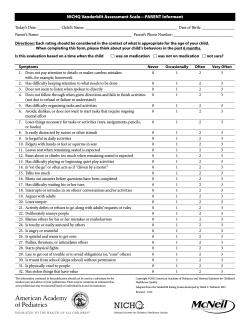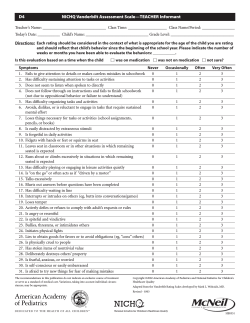
Bob Zawalich’s Brass Voicing Plugin
Bob Zawalich’s Brass Voicing Plugin Block or Close position voicing techniques are very mathematical in their structure. The arranger voices downward from his lead note using available chord tones in a one octave range. Throughout arranging history these voicings have been manipulated by jazz arrangers in what turns out to be ways that are just as mathematical eg Drop 2 voicings, where the 2nd highest note is dropped an octave to give the feeling of a more open voicing. In cases where the led is doubled, some arrangers think it sounds too old fashioned to just double the led so they’ll substitue 9th for root & vice versa among other substitutions. While working with Sibelius I have found that where possible,I like to keep one hand free for selections from the numeric keypad (note values and articulations etc) and the other hand to play in my voicings or melodies. Bob’s Brass Voicing plugin and Arrange Voicing plugin for the saxophone section (although it could be used by any 4 or 5 horn ensemble) allows the arranger to play in his 4 note voicings and run the plugin to get the voicing style he wants. Example 1 Example 1 shows some 4 note voicings. To run the plugin on this single staff version just select the passage containing the phrase you wish to voice. You will have a number of choices of voicing style, see Ex. 2 In single staff versions you won’t be asked to select split pattern. Example 3 shows the result from running the arrange pattern shown in ex. 2. 1 Staff version after plugin (7 Brass Lead, 3rd & 4th doubled + drop 2) 3 Example 4 shows how to prepare for a 2 stave version. The arranger plays his 4 note voicings in either clef (in this case I did the treble clef first). The next step is to copy the exact phrase into the other clef (just copy and paste). Next, select both staves for the duration of the phrase you wish to arrange. Run the plugin, in example 5 I used the settings from the screen shot in Ex. 2. Copy contents of treble staff to the bass staff 7 Example 4 Plugin result (7 Brass - lead, 2nd & 4th doubled + drop 3. Split is for 4 trumpets & 3 trombones 9 Example 5 Thanks to this plugin you are now able to explode voicings with dropped notes in the chord. At present you can double any note in a chord in any octave or by any interval using the Sibelius Arrange feature but you cannot drop a note down an octave unless you do it using filters. The plugin could also be useful for arranging teachers who wish to demonstrate some of the ways that the brass section can be used when writing with block voicing besides the more conventional 4 trumpets with the trombones doubling the trumpets one octave lower. I would like to extend my gratitude to Bob Zawalich for writing this plugin and to Daniel and all at Sibelius for helping us make it available to jazz arrangers. We hope you enjoy it and find it helpful in your work. David O’Rourke. Brass Voicings using plugin Example Phrase C^7 A7&b9 D7 Db9 C% The Brass Section and Close Position Voicing The following voicings only deal with close position or block voicing from which they are derived. Jazz Arrangers draw from a wide palette of tonal colors when scoring for Big Band and these voicings are by no means the beginning and end of voicing techniques. The more open voicings such as those involving upper structure triads, quartal voicings, clusters, spreads etc don't follow a formula in the way close position voicings do. It is probably due to the mathematical way that close voicings are constructed that they have come to be known as "mechanical voicings" in some circles. An obvious question could be: When to use these voicings and which ones? When? If an Arranger uses widely spread open voicings too much harmonic density at faster tempi the results can often sound disjointed. These voicings use 4 part density (octave doubling is regarded as one pitch) and therefore will sound more compact. Which Voicing? This down to taste and available instrumentation. When writing for 8 Brass you can divide them into 2 groups: 7 + 1 or 6 + 2, an example could be 7 Brass in one of the listed voicings with the remaining instrument either an independent lead or an independent bass ostinato. Choosing one of the drop voicings can give the illusion of a spread voicing when scoring at a faster tempo while still maintaining the same cohesive sound as block voicing. These voicings would be very useful for fast harmonised BeBop lines or as a contrast to open voicings aswell as on their own. Enjoy! Same Example Phrase harmonized with Block voicing A7&b9 3 C^7 Six Brass: Lead & 2nd doubled, Scored for 3 tps & 3 tbns Tpt. Tbn. Db9 D7 C% 2 Six Brass: Lead & 2nd doubled, Scored for 4 tpts & 2 tbns 5 Tpt. Tbn. Tpt. Tbn. Six Brass: Lead & 3rd doubled, Drop 2 Scored for 3 tps & 3 tbns Tpt. 9 Tbn. Tpt. 11 Tbn. Six Brass: Lead & 2nd doubled, Scored for 2 tpts & 4 tbns, This distribution works a lot better when trumpets are in the low register. 7 Six Brass: Lead & 3rd doubled, Drop 2 Scored for 4 tpts & 2 tbns 3 Six Brass: Lead & 3rd doubled, Drop 2 Scored for 2 tpts & 4 tbns Tpt. 13 Tbn. Six Brass: Lead & 4th doubled, drop 2 Scored for 3 tps & 3 tbns Tpt. 15 Tbn. Tbn. Six Brass: Lead & 4th doubled, drop 2 Scored for 4 tpts & 2 tbns Tpt. 17 Six Brass: Lead & 4th doubled, drop 2 Scored for 2tpts & 4 tbns Tpt. 19 Tbn. 4 Six Brass: Lead & 2nd doubled, drop 3 Scored for 3 tpts & 3 tbns Tpt. 21 Tbn. Tpt. 23 Tbn. Six Brass: Lead & 2nd doubled, drop 3 Scored for 4 tpts & 2 tbns Six Brass: Lead & 2nd doubled, drop 3 Scored for 2 tpts & 4 tbns Tpt. 25 Tbn. Seven Brass: Lead, 2nd & 3rd doubled, Scored for 4 tpts & 3 tbns Tpt. 27 Tbn. 5 Seven Brass: Lead, 2nd & 3rd doubled, Scored for 4 tpts & 3 tbns 29 Tpt. Tbn. Seven Brass: Lead, 2nd & 4th doubled, Scored for 4 tpts & 3 tbns 31 Tpt. Tbn. Seven Brass: Lead, 2nd & 4th doubled, Scored for 4 tpts & 3 tbns 33 Tpt. Tbn. Seven Brass: Lead, 3rd & 4th doubled, Scored for 4 tpts & 3 tbns 35 Tpt. Tbn. 6 Seven Brass: Lead, 3rd & 4th doubled, Scored for 3 tpts & 4 tbns 37 Tpt. Tbn. Tpt. 39 Tbn. 43 Seven Brass: Lead, 3rd & 4th doubled, drop 2 Scored for 3 tpts & 4 tbns Tpt. Tbn. Tpt. Seven Brass: Lead, 3rd & 4th doubled, drop 2 Scored for 4 tpts & 3 tbns 41 Tbn. Seven Brass: Lead, 2nd & 4th doubled, drop 3 Scored for 4 tpts & 4 tbns 7 Seven Brass: Lead, 2nd & 4th doubled, drop 3 Scored for 3 tpts & 4 tbns Tpt. 45 Tbn. 47 Eight Brass: Lead doubled 8vb & 15ma, 3rd & 4th voice doubled, drop 2 Tpt. 49 Tbn. Tpt. Tbn. Eight Brass: Lead doubled 8vb & 15ma, 2nd & 4th voice doubled, drop 3
© Copyright 2025










